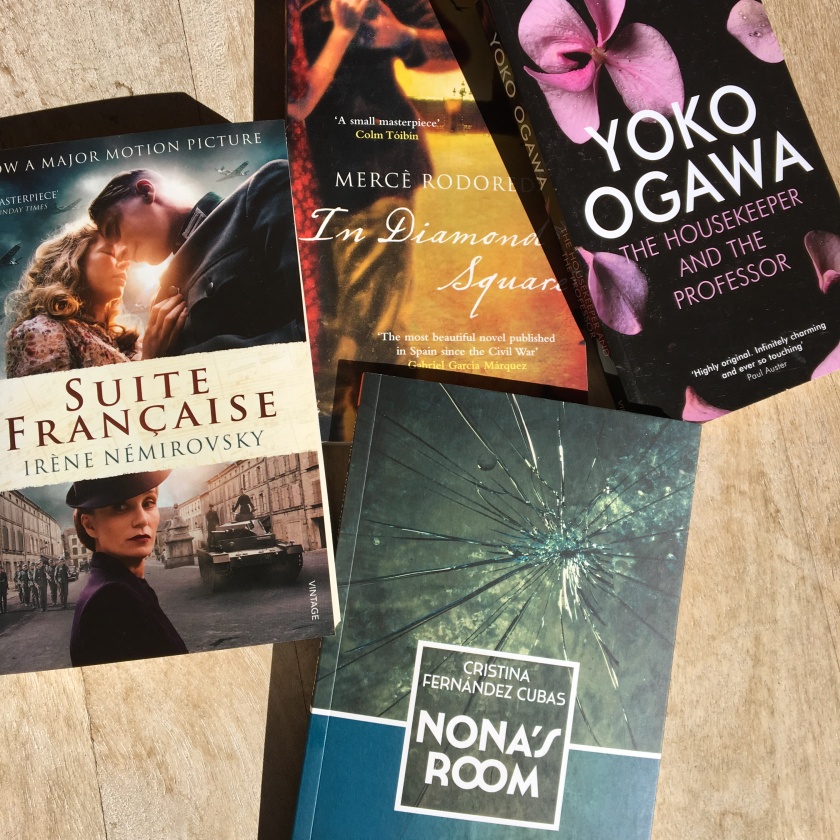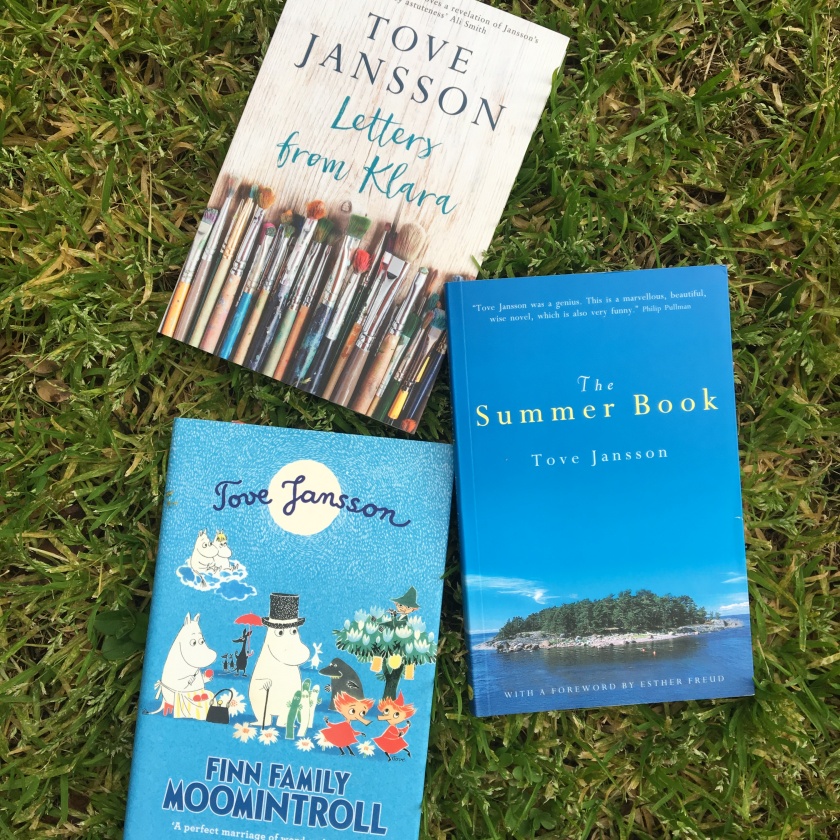Here are my top ten books by women in translation. It is Euro-centric, so if you have some more diverse recommendations, please send them my way!

- Nona’s Room by Cristina Fernandez Cubas, translated by Kathryn Phillips-Miles and Simon Deefholts: Strange, compelling stories set in Barcelona and Madrid. Assured writing, the stories portray realistic families and homes (a girl and her ‘special’ sister, a woman mourning her husband) but twist and turn with elements that make you question reality or the narrator’s state of mind. It’s not often that fiction surprises. Her fearless exploration of the human mind reminded me of Elena Ferrante’s Days of Abanonment.
- My Brilliant Friend by Elena Ferrante, translated by Ann Goldstein: I recommend all four books in the Neopolitan Quartet (this is the first). Her writing is clear and lyrical, with a sense of urgency that propels the story along. I loved the friends Lenu and Lila, the one studious, the other fierce, both vividly described so you can hear them speak, and see them gesticulate; you feel the heat, poverty and everyday violence of their neighbourhood. I love the girls’ strength, the feeling of being in Italy and Ferrante’s honest depiction of that place and time.

- The Summer Book by Tove Jansson: actually, everything by Tove Jansson. I loved the Moomintroll books as a child, there is something so cosy, comforting, gently funny about them and together with her illustrations, they tap into a child’s imagination in the most delightful way. In this book, a six year old girl spends a summer with her grandmother on an island in Finland. It has a wonderful sense of place and nature, and a story that is compelling but lightly told. She is so economical and her writing deceptively simple. It leaves much to think about, but most of all her characters are quirky, unsentimental but completely lovable. She’s an icon, what can I say!

- Suite Francaise by Irene Nemirovsky, translated by Sandra Smith. A beautiful book. Set in World War Two, it describes a family who flees Paris and moves to the countryside, and the tensions that arise when they have to host a German soldier during the occupation. Irene Nemirosvksy, then a celebrated author, wrote this in in the French countryside during the war, and tragically died in Auschwitz in 1942. I was swept away by the story of Lucile, and the contrast between the perfectly observed domestic scenes and constraints of village life, and the dangers of war, all written with musical fluidity and a sense of humour. Nemirovsky was an impeccable writer and this is her masterpiece. Read it!
- Fear and Trembling by Amelie Nothomb, translated by Adriana Hunter. I loved this novella about working at Yumimoto Corporation in Tokyo. Amelie Nothomb has a wonderful, wry sense of humour but also a deep understanding of Japanese culture. Her empathy for her colleagues and ability to laugh at herself make for terrific, laugh-out-loud comedy and an at times poignant study of the constraints of life in Japan working for ‘the company’.
- The Housekeeper and the Professor by Yoko Osagawa, translated by Stephen Snyder: The housekeeper goes to work for a maths professor whose memory, damaged by an accident, lasts only 80 minutes. He communicates in maths terms: she is less educated but sensitive, and learns to appreciate his love of numbers. The professor is kind to her son & they share a passion for baseball. Much is unspoken (what was his life like before the accident?), but there is a gentle message to treat people with respect, not condescension. I liked her carefully drawn characters and clean writing style.
- In Diamond Square by Merce Rodoreda, translated by Peter Bush: A five-star read. Set in Barcelona, this is the story of Pidgey, her marriage to Joe and her daily struggles to survive in the civil war. Told in a dreamlike prose, which is not normally my style, but its raw beauty, the urgency of the story and the characters won me over. A wonderful evocation of 1930s Barcelona but Pidgey’s quiet strength and the trauma of war have a timeless quality. Very moving. I loved this & will read more of Rodoreda’s work.
- Cry, Mother Spain by Lydie Salvayre, translated by Ben Faccini: I picked this up in Waterstones just before we visited Barcelona, and am just reading it now. It’s set in the civil war, but told with an originality and perspective (a village girl who is supposed to become a maid, until the war intervenes) that makes the story fresh. I like her dark humour and the character of Montse, now a spirited old woman but telling the story of her youth.
- The Door by Magda Szabo, translated by Len Rix. Szabo was arguably Hungary’s foremost female novelist. The narrator (who I think remains unnamed) hires an older housekeeper, Emerance. She is a strong, eccentric character, and we don’t know what drives her but gradually learn about her past: the reader’s sympathies ebb and flow between the narrator and Emerance. It highlights the way older people are treated in society, and the afterpains of war. Slow at times but rich and satisfying, told in finely crafted prose. The singular characters and some vivid scenes have stayed with me long after reading it.

- Subtly Worded by Teffi, translated by Anne Marie Jackson and Robert Chandler: I enjoyed these stories very much. Deftly written, Teffi has a deceptively light style, handling poignant subject-matter with elegance and a sense of humour. These stories open a window into the Russian literary circles of the early 1900s – fascinating in itself, not to mention her encounters with Tolstoy and Rasputin, which are wonderfully recounted. Teffi was forced to leave Moscow in 1917 and I recommend her memoir of this period, Memories: From Moscow to the Black Sea.
What are your favourite books by women in translation?
